
Roots
Consider for a moment the very strands that spring from your scalp, each a testament to stories untold, to journeys across continents and generations. This textured crown, a living archive, bears the whispers of ancestors, each curl and coil a memory held. For countless centuries, before the advent of synthesized compounds and complex laboratory concoctions, our forebears looked to the earth, to the resilient bounty of nature, for sustenance, solace, and indeed, for care of their hair.
The question of how to shield these precious strands from the world’s relentless embrace, from the sun’s fierce kiss, the wind’s drying breath, or the dust of daily living, is not new. It is a query etched into the collective memory of Black and mixed-race communities, a practical concern that also held spiritual weight.
Into this deep, abiding need steps shea butter, a substance held sacred across West Africa, often referred to as ‘women’s gold’. This golden balm, extracted from the nuts of the shea tree (Vitellaria paradoxa), has been a constant companion in the heritage of textured hair. Its journey from the sun-drenched savannahs to becoming a staple in care regimens across the globe is a chronicle not merely of trade routes, but of cultural preservation, of knowledge passed hand to hand, generation to generation. When we explore how this humble butter forms a shield against environmental disruption, we are not just talking about lipids and vitamins; we are speaking of legacy, of a botanical ally whose protective embrace has spanned epochs.
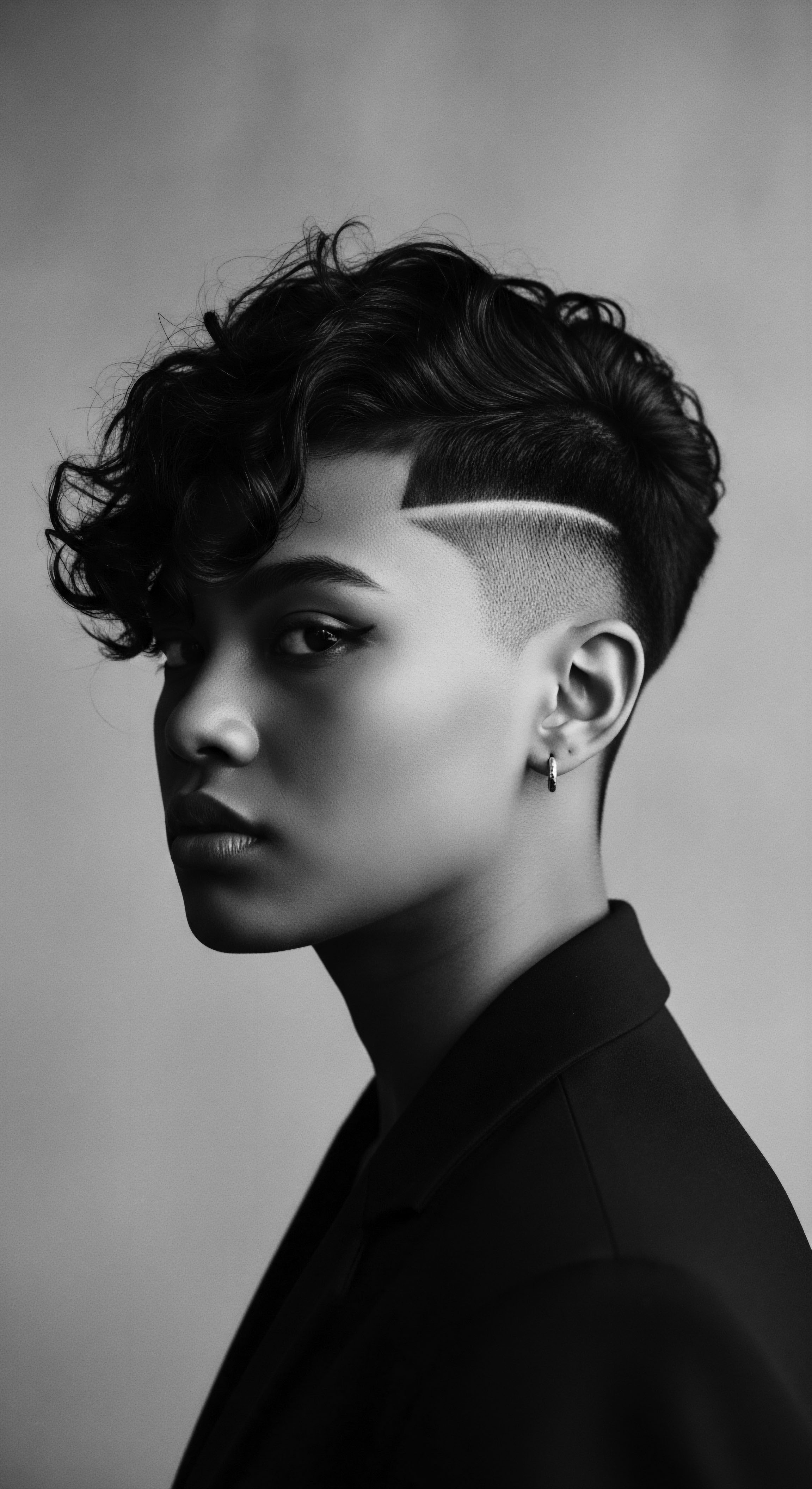
Ancestral Understanding of Textured Hair’s Structure
To truly grasp shea butter’s defensive capacities, we must first recognize the unique architecture of textured hair itself. Unlike straight hair, which tends to have a more uniform, circular cross-section, coily and curly strands exhibit an elliptical or flattened shape. This shape, combined with the way the hair shaft twists and turns as it grows, creates natural points of vulnerability.
The cuticle, the outermost protective layer, tends to lift more readily at these bends, exposing the inner cortex to external stressors. This inherent structural characteristic, a genetic inheritance, meant that ancestral care practices often centered on sealing the cuticle and providing a protective barrier.
The knowledge of this fragility was not something documented in scientific journals of old, but rather understood through generations of observation, through touch, through the very experience of caring for one’s own hair and that of their kin. They knew intuitively that these strands required a particular form of attentiveness, a gentle touch, and rich, substantive emollients. The application of substances like shea butter, rich in fatty acids, acted as an external sealant, aiding in keeping moisture within the hair shaft and deflecting external aggressors. This practice, often a communal ritual, served as a foundational element in hair preservation.
Shea butter’s protective legacy for textured hair speaks to a profound ancestral wisdom, acknowledging the unique structural needs of coily and curly strands.

A Lexicon Rooted in the Land
The language surrounding textured hair care, particularly concerning heritage practices, carries echoes of the natural world from which ingredients like shea butter emerged. Terms like ‘nourish,’ ‘seal,’ and ‘restore’ were not merely functional descriptors; they carried the weight of connection to the earth, to the healing power of plants. The very act of applying shea butter, often warmed by hand, was a gesture of deep care, a recognition of the hair’s vitality and its need for sustenance.
- Ori ❉ The Yoruba term for shea butter, signifying its deep cultural and spiritual importance, often associated with inner strength and well-being.
- Kpakpo ❉ An Ewe word from Ghana for shea butter, underscoring its widespread recognition and utility across different West African communities.
- Hair Anatomy ❉ The study of the hair shaft, follicle, and scalp, recognizing the unique elliptical shape and cuticle structure of textured hair that necessitates specific protective care.

The Rhythms of Growth and Environmental Influence
Hair growth, a ceaseless cycle, is influenced by myriad factors, from internal nutrition and genetics to external environmental conditions. For those with textured hair, particularly in climates where the sun beat down with unrelenting intensity, where arid winds brought dust and robbed moisture, the challenge was ever present. Ancestral practices evolved to meet these challenges, recognizing the importance of shielding the hair not just from direct damage, but from the cumulative stress of daily exposure. Shea butter, with its occlusive properties, became a natural choice.
It did not merely sit upon the strand; its constituents worked to form a permeable shield, allowing the hair to breathe while still providing defense. This deep knowledge, passed down through generations, formed the bedrock of effective hair care, ensuring that even in harsh environments, hair could thrive.

Ritual
The application of shea butter to textured hair transcends a simple cosmetic act; it is a ritual, deeply embedded in the cultural tapestry of Black and mixed-race communities. This practice carries the weight of generations, a tender thread connecting present-day routines to ancestral care traditions. Environmental aggressors – UV radiation, particulate pollution, humidity fluctuations, and mechanical stress from daily manipulation – pose significant challenges to the inherent structure of textured hair. Shea butter, through its unique composition, emerges as a steadfast ally in this enduring struggle, its use reflecting both ancient wisdom and modern understanding of hair science.
Consider the practice of ‘oiling’ or ‘greasing’ the scalp and hair, a ritual common across many diasporic cultures. This was not merely about aesthetic appeal; it was a deliberate act of protection and maintenance. Shea butter, often mixed with other potent botanicals, served as a primary agent in these applications. Its fatty acid profile – rich in oleic acid, stearic acid, linoleic acid, and palmitic acid – creates a substantive, yet breathable, film around the hair shaft.
This film acts as a physical barrier, deflecting airborne pollutants and particulate matter that might otherwise cling to and abrade the delicate cuticle. It also helps to mitigate the dehydrating effects of low humidity, slowing the evaporation of moisture from within the hair.
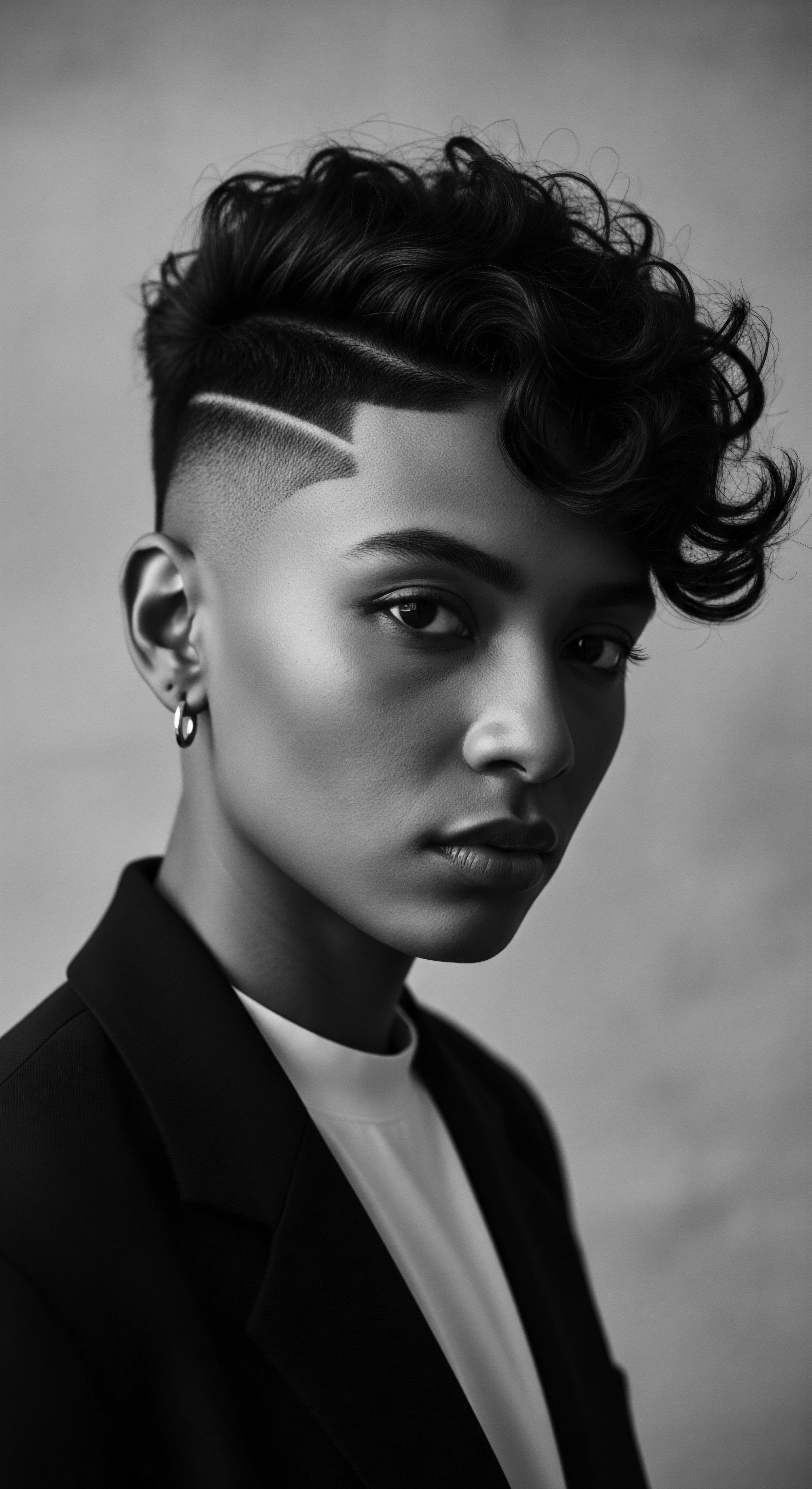
Protective Styling and Shea Butter’s Role
The heritage of protective styling – braids, twists, cornrows, and buns – finds a natural partner in shea butter. These styles, developed out of necessity and artistic expression, aimed to minimize exposure to environmental elements and reduce daily manipulation, thereby preserving length and health. Shea butter played a dual role in these preparations. Applied before or during the styling process, it provided slip, making the hair more pliable and reducing breakage during intricate braiding.
More significantly, it coated each section, offering an additional layer of defense to the tucked-away strands, essentially sealing them from the outside world. This created a micro-environment within the protective style, helping to maintain internal moisture levels.
For example, in many West African cultures, young girls would have their hair braided into intricate patterns, often with generous amounts of shea butter applied. This practice served a practical purpose, protecting the hair during daily activities and long periods of work in the sun, but also carried profound social and aesthetic significance, marking rites of passage and community belonging. The butter softened the hair, making it more manageable for these elaborate styles, while also providing a visible sheen that spoke of health and vitality.
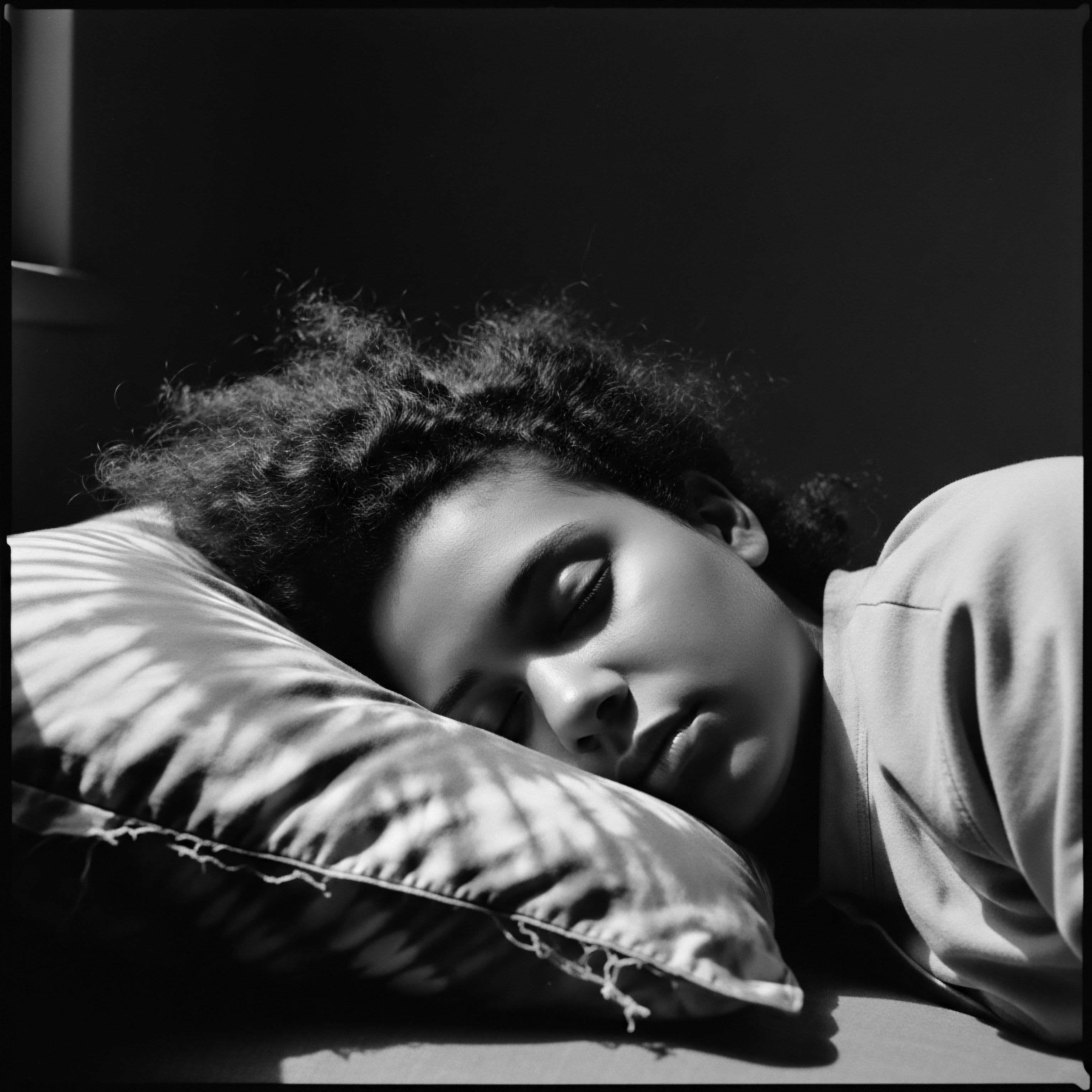
What is the Science behind Shea Butter’s Shield?
From a scientific vantage point, the efficacy of shea butter as an environmental shield can be attributed to several key properties. It contains a high percentage of non-saponifiable matter, including compounds like triterpene alcohols, phytosterols, and karitene. These components contribute to its anti-inflammatory and antioxidant activities.
When hair is exposed to UV radiation, for instance, free radicals are generated, leading to oxidative damage to the protein structure of the hair. The antioxidants within shea butter can help to scavenge these free radicals, thereby minimizing the degradation of keratin and the fading of natural hair color.
Furthermore, the fatty acid composition of shea butter closely mirrors that of the natural lipids found in human skin and hair. This biomimicry allows it to integrate seamlessly with the hair’s existing lipid layers, strengthening its natural barrier function. Its emollient nature also means it can fill in microscopic gaps along the cuticle, smoothing the surface and making it less susceptible to friction and abrasion from environmental particles. This explains why hair treated with shea butter often feels softer and appears more lustrous, a direct consequence of improved cuticle integrity.
| Traditional Ingredient (Heritage Use) Shea Butter (Vitellaria paradoxa) |
| Primary Benefit in Ancestral Practice Protection from sun and wind, moisture sealing, conditioning |
| Modern Scientific Analog/Mechanism Occlusive emollient, antioxidant (karitene), fatty acid replenishment |
| Traditional Ingredient (Heritage Use) Chebe Powder (Croton zambesicus) |
| Primary Benefit in Ancestral Practice Hair strengthening, length retention, breakage reduction (Chad) |
| Modern Scientific Analog/Mechanism Protein binding, strengthening of hair shaft, anti-inflammatory properties |
| Traditional Ingredient (Heritage Use) African Black Soap |
| Primary Benefit in Ancestral Practice Scalp cleansing, clarifying, gentle exfoliation |
| Modern Scientific Analog/Mechanism Natural surfactants, mineral content for detoxification |
| Traditional Ingredient (Heritage Use) Ancestral ingredients like shea butter provided comprehensive care, often validated by contemporary scientific understanding. |
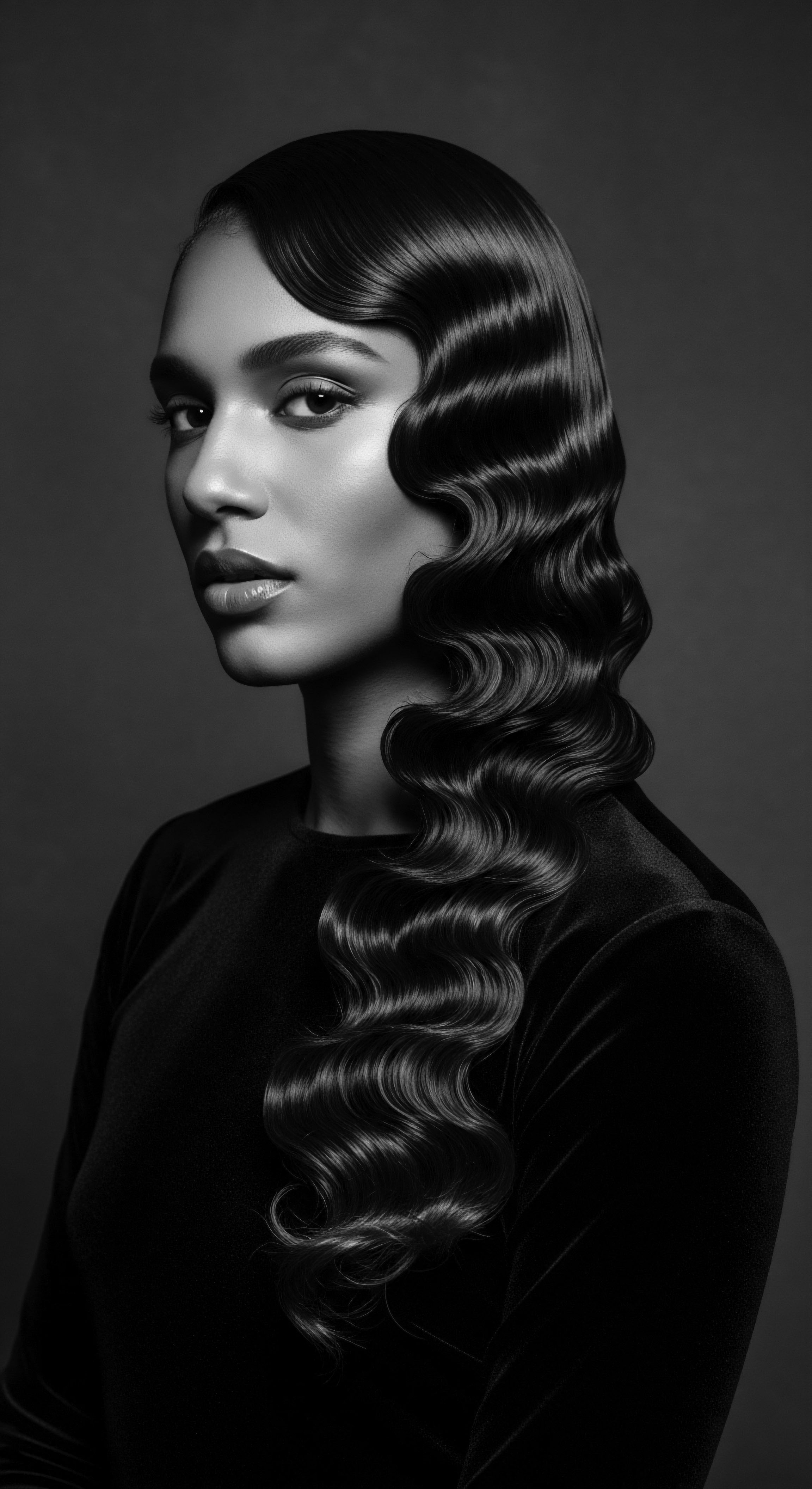
The Gentle Art of Heat Protection
While traditional textured hair care often minimized direct heat, the contemporary landscape sometimes calls for thermal manipulation. Shea butter, with its relatively high smoke point (around 450°F or 232°C), has found a place as a natural heat protectant. When applied sparingly to damp hair prior to blow-drying or flat-ironing, it forms a thermal buffer, slowing the rate of heat transfer to the hair shaft. This reduces the immediate thermal damage that can lead to brittle, fried strands and the loss of natural curl patterns.
This application is a newer adaptation of an ancient ingredient, demonstrating its enduring utility and versatility in evolving care regimens. It speaks to a continuity, where ancestral resources adapt to contemporary demands, never losing sight of their core purpose.

Relay
The story of shea butter as a protective balm for textured hair is a relay race across time, each generation passing the baton of knowledge, adapting its application while preserving its core reverence. This enduring tradition speaks volumes about the inherent resilience of both textured hair and the communities who honor it. The deep scientific understanding of its protective qualities, often now articulated in molecular terms, merely confirms what ancestral wisdom has long whispered ❉ shea butter stands as a formidable shield against the relentless environmental forces that seek to diminish the vitality of our strands.
The very structure of textured hair, with its unique bends and twists, predisposes it to moisture loss and susceptibility to external aggressors. UV radiation, for instance, is a pervasive environmental threat. Studies have indicated that the UV index in sub-Saharan Africa, where shea trees primarily grow, is consistently high, often reaching extreme levels. This constant exposure necessitated potent natural defenses.
Research published in the Journal of Oleo Science (Akihisa et al. 2010, p. 509) highlighted the presence of significant amounts of unsaponifiable lipids, particularly cinnamic acid esters, in shea butter. These compounds are known to absorb UV radiation, acting as a natural sunscreen for both skin and hair.
This inherent UV-filtering capability meant that shea butter was not simply a conditioning agent; it was a frontline defense against sun-induced degradation of hair protein and color fade, a silent guardian for hair exposed to harsh tropical light for millennia. This observation underscores the profound connection between the environment where shea butter thrives and its suitability for safeguarding hair in similar climatic conditions.

Holistic Care and Ancestral Wellness
In many indigenous African cultures, hair care was never separated from overall well-being. It was a holistic practice, intertwined with diet, community, and spiritual health. Shea butter played a role in this broader wellness philosophy. Its regular application was part of a regimen that promoted robust hair growth and scalp health, seen as reflections of internal harmony.
The rich concentration of vitamins A and E in shea butter, now recognized for their antioxidant and regenerative properties, would have supported scalp circulation and cellular health, fostering an optimal environment for hair follicles. This ancestral perspective viewed healthy hair as a living extension of a healthy body and spirit, a testament to balanced living rather than merely external adornment.
- Scalp Health ❉ Massaging shea butter into the scalp can help address dryness and flakiness, providing a healthy foundation for hair growth by soothing the skin.
- Hair Elasticity ❉ The fatty acids present help to improve the hair’s flexibility, making it less prone to breakage when subjected to environmental stressors or styling.
- Moisture Balance ❉ Shea butter acts as an effective humectant and emollient, preventing excessive water loss from the hair shaft while also drawing in moisture from the air in humid conditions.
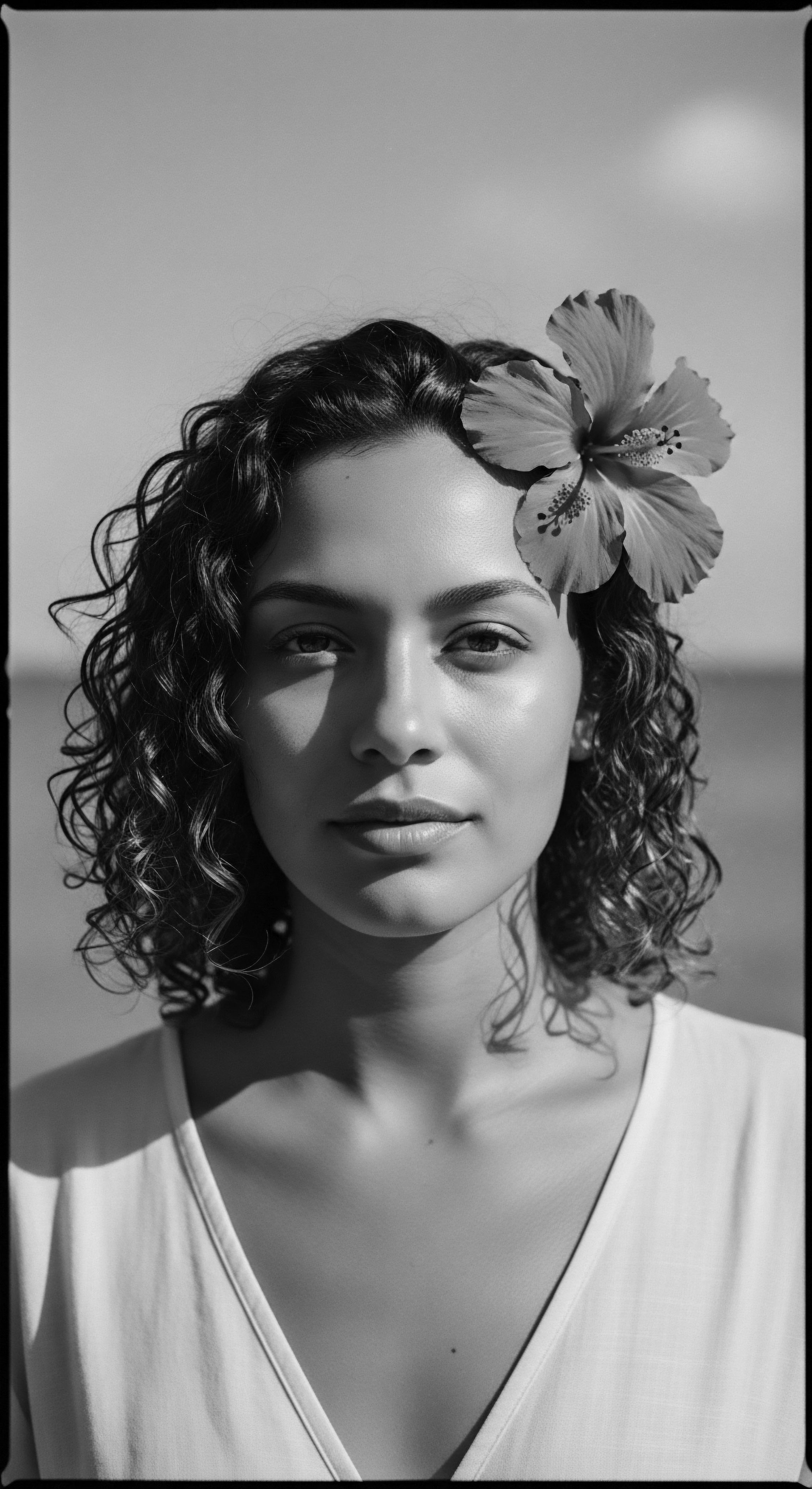
Nighttime Sanctuaries and the Bonnet’s Wisdom
The concept of nighttime protection for textured hair is a practice with deep heritage roots, evolving from simpler methods to the ubiquitous satin or silk bonnet of today. Ancestral communities understood that rest offered an opportunity for hair to recuperate from the day’s environmental exposures. While not always in the form of a ‘bonnet,’ covering the hair at night with soft cloths or wraps served a similar purpose ❉ minimizing friction against rough sleeping surfaces and preserving applied treatments like shea butter.
Shea butter, applied as part of an evening ritual, would have been allowed to penetrate and coat the hair throughout the night. This extended contact maximized its protective and restorative qualities. The barrier it formed helped to lock in moisture, preparing the hair to face the next day’s environmental challenges.
The modern satin bonnet, therefore, is a direct descendant of these historical practices, a functional evolution that complements the enduring efficacy of shea butter, creating a true nocturnal sanctuary for strands. This combination—a deeply conditioning balm sealed in by a friction-reducing cover—demonstrates a continuum of protective wisdom.
The enduring use of shea butter, from ancient rituals to modern regimens, highlights its unparalleled capacity to shield textured hair from environmental assaults.

Addressing Environmental Damage ❉ A Multifaceted Approach
Environmental damage to textured hair often manifests as dryness, brittleness, breakage, and dullness. Particulate matter, common in urban environments, can settle on the hair, creating a rough surface that leads to tangling and mechanical wear. Shea butter’s smooth, coating consistency helps to create a less adhesive surface for these particles, allowing them to be more easily shed or rinsed away.
Its substantive lipids act as a slip agent, reducing friction during combing or styling, which is especially important for textured hair prone to knots and snags. This physical protection is just as critical as its chemical antioxidant properties.
The historical record, while not always written, is carved into the living practices and oral traditions. The very act of generations reaching for shea butter, instinctively understanding its ability to mend and protect, forms a compelling case study. Its consistent presence across diverse cultures and climates where textured hair is prevalent—from the dry Harmattan winds of West Africa to the humid Caribbean islands—speaks to a universal recognition of its protective attributes against varied environmental stresses. Its efficacy is not a recent discovery; it is a legacy.
| Environmental Stressor UV Radiation |
| Impact on Textured Hair Protein degradation, color fade, oxidative stress |
| Shea Butter's Shielding Mechanism Contains cinnamic acid esters (natural UV absorbers), antioxidants |
| Environmental Stressor Humidity Fluctuations (high/low) |
| Impact on Textured Hair Frizz, excessive swelling, dryness, brittleness |
| Shea Butter's Shielding Mechanism Occlusive barrier maintains moisture balance, humectant properties in moderate humidity |
| Environmental Stressor Particulate Pollution |
| Impact on Textured Hair Surface abrasion, dullness, buildup, tangling |
| Shea Butter's Shielding Mechanism Creates a smooth, non-adhesive surface, reducing particle adherence and friction |
| Environmental Stressor Mechanical Stress (wind, handling) |
| Impact on Textured Hair Breakage, cuticle lifting, tangles |
| Shea Butter's Shielding Mechanism Lubricates hair shaft, improves slip, strengthens hair elasticity |
| Environmental Stressor Shea butter offers multifaceted protection, addressing both physical and chemical aspects of environmental damage to textured hair. |

Reflection
The journey through shea butter’s protective embrace for textured hair ultimately leads us back to a singular, resounding truth ❉ heritage is not merely a relic of the past; it is a living, breathing guide for the present and a profound beacon for the future. The simple, golden balm from the shea tree stands as a powerful symbol of ancestral wisdom, a testament to the ingenious ways communities have long cared for their unique strands amidst the world’s challenges. Its role as a shield against environmental damage is not an accidental discovery; it is the culmination of millennia of observation, practice, and a deep, intuitive respect for the earth’s bounty and the inherent needs of textured hair.
When we choose shea butter today, we are not simply selecting an ingredient; we are participating in a timeless ritual, reaffirming a connection to those who came before us. We are honoring the resilience of Black and mixed-race hair, recognizing its vulnerability and its strength, and choosing a path of care that is both deeply rooted and continuously evolving. The ‘Soul of a Strand’ whispers that our hair carries more than just genetic codes; it holds the memory of hands that nurtured it, the wisdom of plants that sustained it, and the enduring legacy of a people who have always found ways to adorn, protect, and celebrate their crowns, come what may. The story of shea butter and textured hair is an ongoing narrative of protection, perseverance, and profound beauty.

References
- Akihisa, T. Kojima, N. Kikuchi, T. Yasukawa, K. Tokuda, H. T. Masters, E. Manos, D. & Duncan, M. (2010). Anti-inflammatory and Chemopreventive Effects of Triterpene Cinnamates and Acetates from Shea Fat. Journal of Oleo Science, 59(10), 509–516.
- Adina, K. (2012). The Science of Black Hair ❉ A Comprehensive Guide to Textured Hair Care. K. Adina Publications.
- Opoku, N. & Akoto, O. (2018). Chemical composition and antioxidant properties of shea butter from Northern Ghana. Journal of Food Quality, 2018.
- Groom, N. (2011). The Perfume Handbook. Springer Science & Business Media.
- Chekou, D. (2017). African Hair ❉ Its Cultural and Spiritual Significance. Chekou Publishing.
- Draelos, Z. D. (2017). Cosmetic Dermatology ❉ Products and Procedures. John Wiley & Sons.
- Robins, S. (2013). Hair in African Art and Culture. Museum for African Art.
